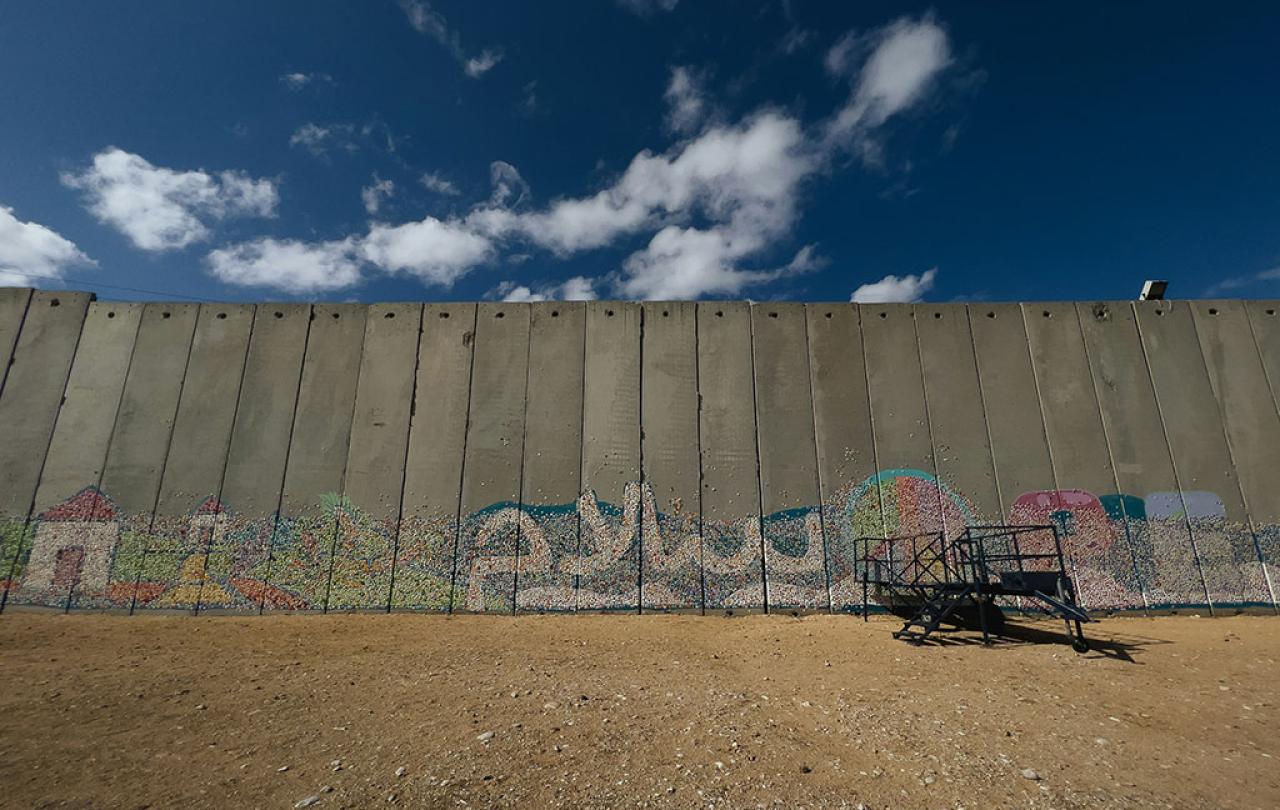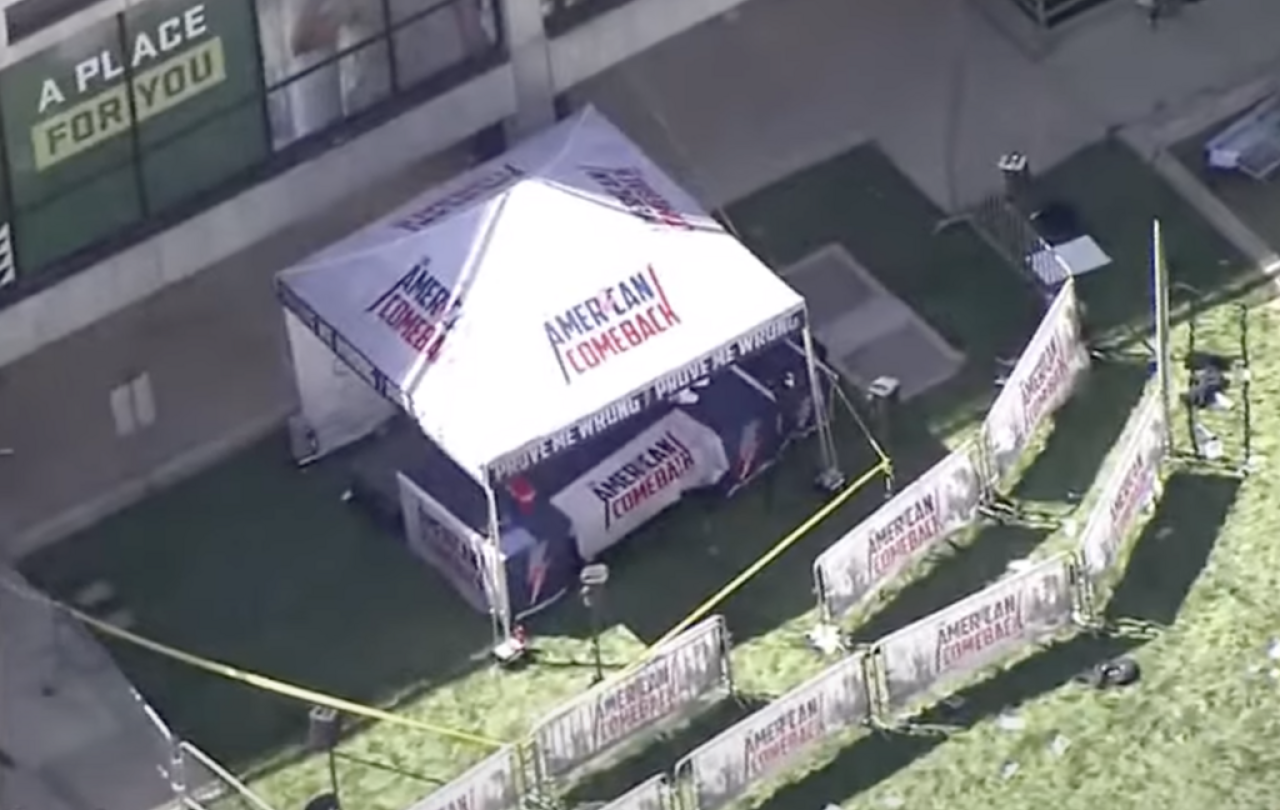
It’s the first anniversary of October 7, and we’re left with the grim task of finding a way to appropriately honor the dead, stand in solidarity with the bereaved, and mourn with all who mourn. And we do this as we acknowledge our ongoing collective failure and the unimaginable and avoidable loss of so many innocent lives, each one with its own promise and possibility forever denied. In the end, it’s hard to find a way to commemorate the horror of that day because it’s still going on. We’ve turned no pages, learned no lessons, made no progress.
Someday there will no doubt be a grand and somber memorial that tells the story of the brutal October 7 attack. The victims of that day will be remembered, the captives and their fates memorialized. And some day there will be a museum that tells the story of what many already believe will be characterized in the historical record as a genocide in Gaza. To what we already know of the massive destruction of a place and a people will be added details that will be excavated from the rubble, testimonies from the traumatized survivors, heartbreaking tales of orphans and of the destruction of entire families. Maybe these places of collective memory will offer greater context for the world in which the tragedies that created them took place, some kind of “never again” lessons to learn, and no doubt some sharp analysis of the failures that led to these days of great darkness. If these attempts at memorialization are honest, they will hold many of us up to withering critique. We’ll be in the museums too, enduring rebuke for the indifference that led us here or for our zero-sum thinking that could only imagine a world born of and sustained by violence in all its forms.
These are lone and lonely voices in a land besieged by brutality, dehumanization, and ideologies of ethnic and religious supremacy. But they are not unicorns.
If we don't want the story to be about our blind complicity, but about our courage, we still have time to own our agency. Because this isn't over yet. We can mark this day by remembering that it will continue to be like all the others until we all do our part to achieve a ceasefire, a release of captives, and an end to support for systems of inequality and control. In whatever ways great or small that we can, we have to reject the logic of violence and the ideologies of hatred and exclusion. And to be active participants in cultivating in ourselves and in our communities an imagination for the way each human life is sacred and our flourishing is tied to that of our neighbors.
We do this even as we pause and honor the innocent dead in Israel, in Gaza, in the West Bank, and now in Lebanon. We mourn with all those who mourn. But we do that with people still dying in Gaza, with millions of Palestinians still displaced, with disease and hunger rampant, with Israeli hostages still being held, with massive street protests calling for a ceasefire being ignored, with hundreds of thousands of Israelis still displaced from their homes in the north and the south, with Hezbollah rockets still falling and now with the war more fully advancing into Lebanon, with a wider regional war ever a distinct and terrifying possibility, with settlers rampaging in the West Bank with impunity, with ideological zealots setting the terms of debate, with economic catastrophe as hundreds of thousands of West Bank Palestinians have endured a year with no income, and with palpable fear among Palestinian citizens of Israel.
The bankruptcy of the ideas that have prevailed this past year remain firmly in control and continue to capture the imagination of too many. And yet there are those who know that violence begets violence begets violence, and that this is how we got here, not how we get out.
I spent a day in New York City last month with four members of the Parents Circle/Families Forum, an organization made up of 700 Palestinian and Israeli families, each who have each lost a loved one in the conflict. In addition to the pain of loss they share, they also share a commitment to a rejection of the very notion of revenge and an embrace of the work of reconciliation. Four members of this group traveled to the United States for a two-week tour to help us understand our part in their shattered and unjust reality and to let us know that there is another way if we can find the courage to pursue it. That way is mutuality. It is an embrace of security, dignity and freedom for all the people of their traumatized shared homeland, Israelis and Palestinians alike, in equal measure.
Each member of this unlikely tribe has a unique story of personal loss, and as they speak, they tell of the worst day of their lives, over and over again. But there is exponential power in the fact that these stories are told in one voice. Two members visiting the U.S. are mothers, one Israeli and one Palestinian, who have lost children in the conflict and have been transformed by the deep realization that they share the same pain. One was a young man whose ten-year-old sister was killed by an Israeli border policeman and after some years of anger-fueled stone throwing as a teenager, he began to channel his trauma into the work of resisting occupation and violence via the collaborative work of justice, freedom and security through reconciliation. And one of the newest members of this work is a man whose mother, an internationally recognized Israeli peace activist, was killed in a kibbutz on October 7. He has chosen to pick up his mother’s work and devote himself to a just peace for himself and for all his neighbors, Palestinians included.
These are lone and lonely voices in a land besieged by brutality, dehumanization, and ideologies of ethnic and religious supremacy. But they are not unicorns. There are others there whose stories need to be told and whose work needs our support.
My church is preaching a sermon series reflecting on the leadership and choices of the kings of biblical Israel and Judah. Their stories are old but their inclinations to violence, their neglect of care for the poor and the widow, and their lack of concern for justice are timeless. In a recent sermon I was struck by my pastor’s observation that even those of us who have regularly engaged with the Bible all our lives don’t always know much about the kings, but we do know something of the prophets. They are, in his words, “the ones who hold the story for God.” And in times like these, as we descend ever deeper into darkness and inhumanity, they are the ones who share in the pathos of God, to borrow from rabbi Abraham Joshua Heschel. But they also show us the way out. Warmongers in the Middle East and here in the West are creating massive destruction. We too easily and readily live within the world created by their corrupted imagination. We can’t ignore them. But we don’t have to listen to them. Listen to the prophets, those who hold The Story of God’s shalom, of his kingdom of justice and peace. They are still among us. One of our responses is to make sure we’re listening to these voices, amplifying them, and following their lead.
As a Christian, over this past year, I have found myself being drawn more deeply into the life and the person and the divinity of Jesus of Nazareth. The deep love of the maligned and suffering, enemy-loving Jesus, he who was accused by the religious establishment, executed by one of the great empires of history, mocked and spit upon, all for the threat he posed to those addicted to power, control, exclusion and the violence needed to enforce it all. This is the Jesus who boldly declared liberation of the captives, vision for the blind, food for the hungry--a new kingdom of justice and mercy, of wholeness and shalom.
None of these things I believe absolve me from acting. Jesus is not my cop out, he’s my way out. What if we who seek to follow him were to repent of our propensity to violence, our fascination with the zero-sum binaries we use to create hierarchies of exclusion, and our failure to demonstrate our love for God by showing love of our neighbor? We might not solve all the problems that are destroying us but we’d at least stop contributing to them. And imagine what a more generative and healing presence in the world we would be if we joined our voices with others of different faiths and none who also believe in a world more just and whole. I would argue that the world in all its diversity and complexity needs Christians to mark this day and this moment is by taking Jesus so seriously that we start to live out his calling to be active participants in the work of justice, healing and repair and living reminders that all are made in the image of God, violence begets violence, and the simple truth of Mother Theresa who said, “If we have no peace it’s because we’ve forgotten we belong to each other.”





